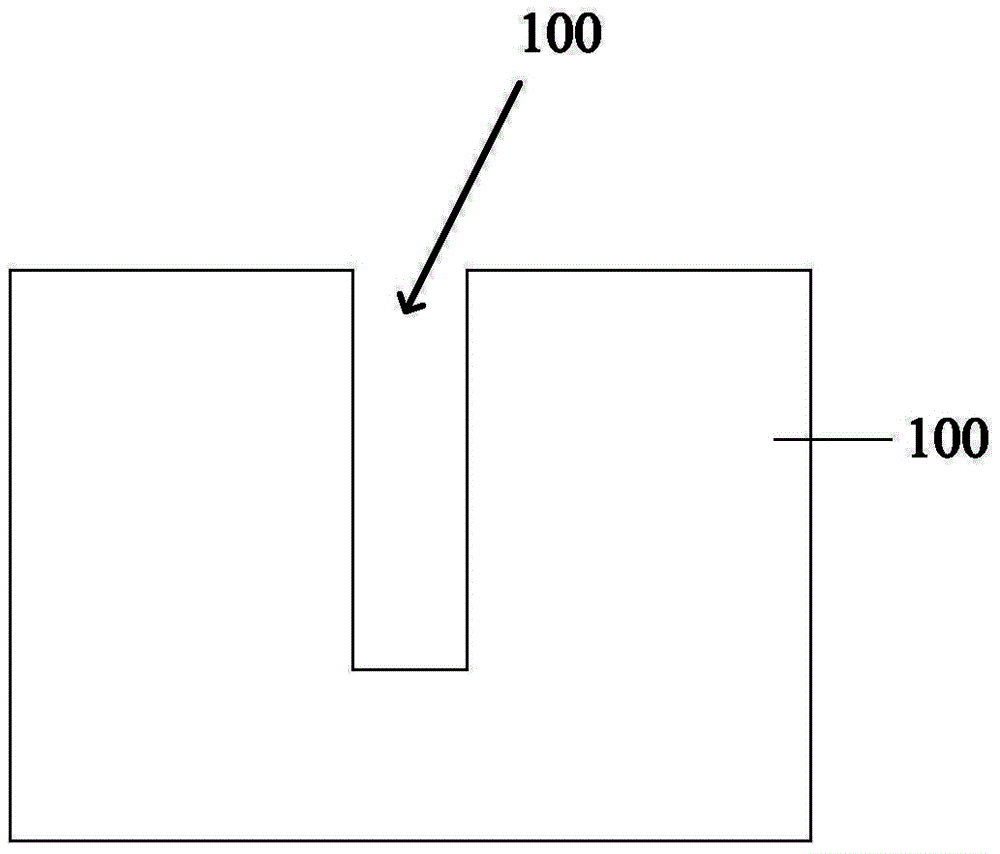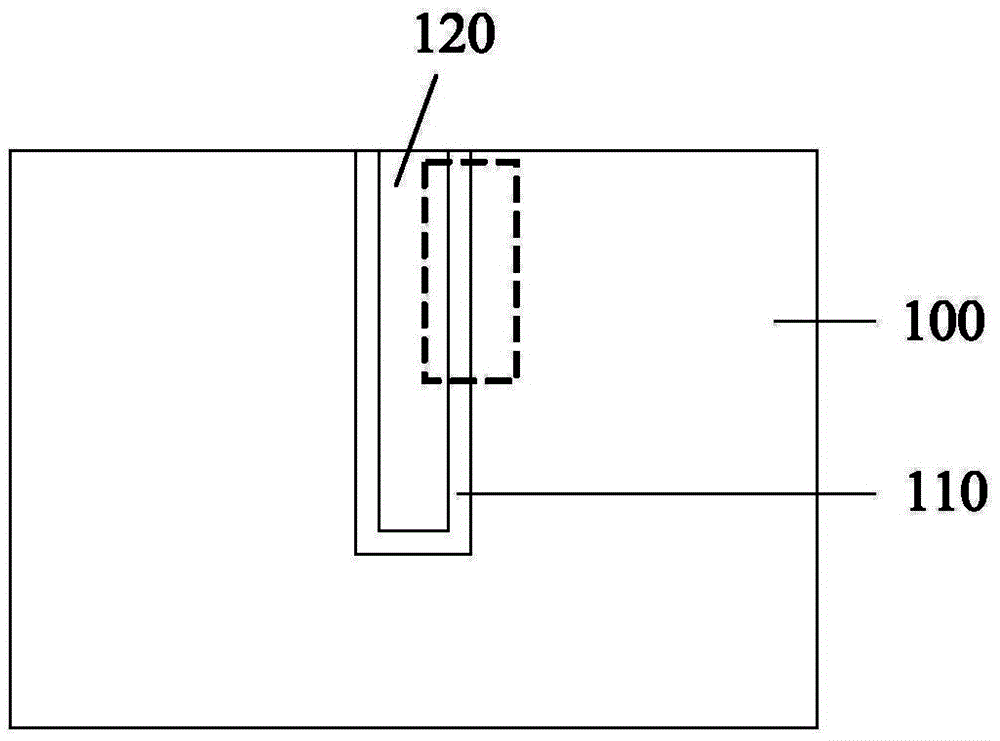Forming method of silicon through hole
A through-silicon via, ring-shaped technology, used in electrical components, semiconductor/solid-state device manufacturing, circuits, etc., can solve problems such as large differences in thermal expansion coefficients, reduced reliability of through-silicon vias, and delamination of conductive layers and diffusion barrier layers. , to achieve the effect of improving reliability and reducing the possibility of delamination and cracking
- Summary
- Abstract
- Description
- Claims
- Application Information
AI Technical Summary
Problems solved by technology
Method used
Image
Examples
Embodiment Construction
[0037] Existing methods for forming TSVs generally include:
[0038] like figure 1 As shown, a semiconductor substrate 100 is provided, and a via hole 101 is formed on the semiconductor substrate 100;
[0039] like figure 2 shown in figure 1 A diffusion barrier layer 110 is formed on the surface of the via hole 101 shown, and a metal layer 120 is continuously filled in the via hole 101. The material of the metal layer 120 may be copper, and then planarized to obtain a through silicon via.
[0040] image 3 for figure 2 In the shown structure, it is an enlarged schematic view of the part surrounded by the dotted line box, and the part surrounded by the dotted line box includes a part of the metal layer 120 , a part of the diffusion barrier layer 110 and a part of the semiconductor substrate 100 arranged in sequence. exist image 3 Points A, B, C and D are selected from the shown TSVs. Point A and point B are located at the top of the TSV, and point A is located in th...
PUM
 Login to View More
Login to View More Abstract
Description
Claims
Application Information
 Login to View More
Login to View More - R&D
- Intellectual Property
- Life Sciences
- Materials
- Tech Scout
- Unparalleled Data Quality
- Higher Quality Content
- 60% Fewer Hallucinations
Browse by: Latest US Patents, China's latest patents, Technical Efficacy Thesaurus, Application Domain, Technology Topic, Popular Technical Reports.
© 2025 PatSnap. All rights reserved.Legal|Privacy policy|Modern Slavery Act Transparency Statement|Sitemap|About US| Contact US: help@patsnap.com



